Lighting is an element that many of us tend to overlook in our everyday lives, but it becomes exceptionally significant during nighttime sporting events. Whether we are actively participating or merely spectating, effective lighting greatly enhances the experience and ensures optimal visibility. This article aims to provide comprehensive insights into how to optimize your lighting system to achieve the best results, ensuring both functionality and safety are maximized during these events.
Table of Contents
ToggleOutdoor Sports Field and Stadium Lighting
Floodlights
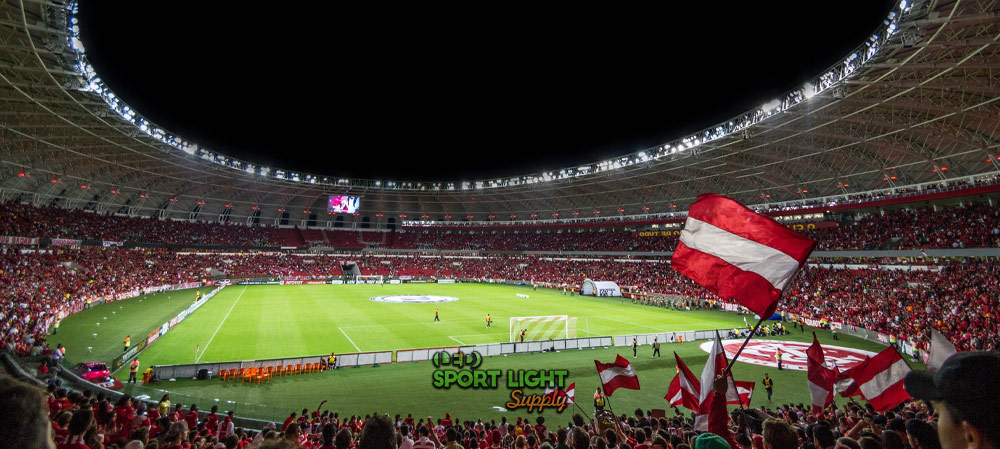
High-power floodlights are crucial for stadiums used for major sports such as football, soccer, athletics, and hockey. These sports involve the ball traveling both on the ground and through the air, making it essential that the floodlighting system effectively illuminates the ball’s trajectory. Adhering to the requirements set by sports governing bodies and broadcasters is also vital.
Minimizing glare is important as it can cause difficulties for both players and spectators. Additionally, photographers may struggle with excessive glare. A common method to reduce glare is the use of glare shields, which can help but may diminish the lighting’s effectiveness due to light loss. LED lighting is a superior solution as it typically produces less glare compared to Metal Halide lights.
For a standard football stadium, the lighting system needs to provide approximately 5,000,000 lumens. Achieving this requires a total wattage ranging from 50,000 to 250,000 watts, with individual bulbs typically between 400 and 2,000 watts.
Spotlights
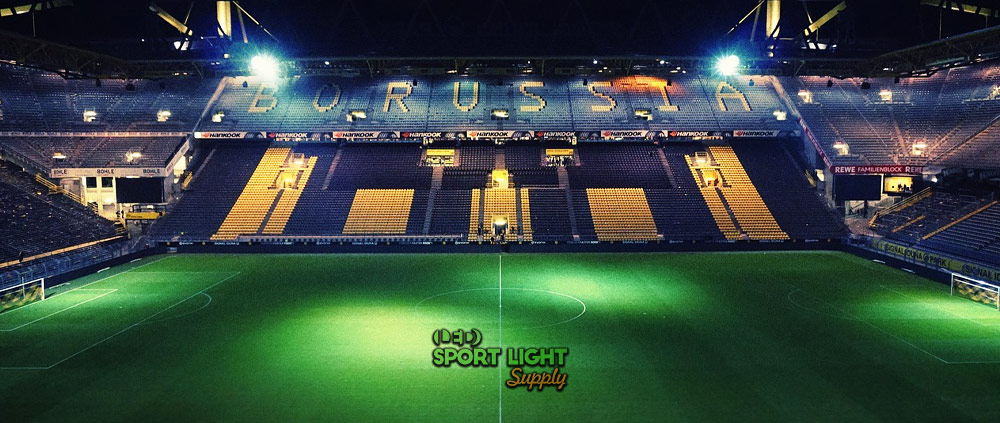
Stadiums are often utilized for around 10 to 15 games annually, with minimal revenue generation during off-seasons. To maximize the use of these costly assets and justify the high capital investment, operators are increasingly exploring alternative uses such as concerts and conventions. These additional activities often demand different lighting requirements than standard game settings.
Spotlights are essential for events like concerts, where they are used to highlight specific areas of the field. The flexibility offered by LED lighting has become a popular choice for such purposes. Unlike Metal Halide lighting, which requires time to warm up, LED lights provide instant illumination, making them ideal for varied events.
Spotlights are capable of delivering long-range illumination to specific areas of the field, with effective ranges between 100 and 200 meters.
High Mast Lights
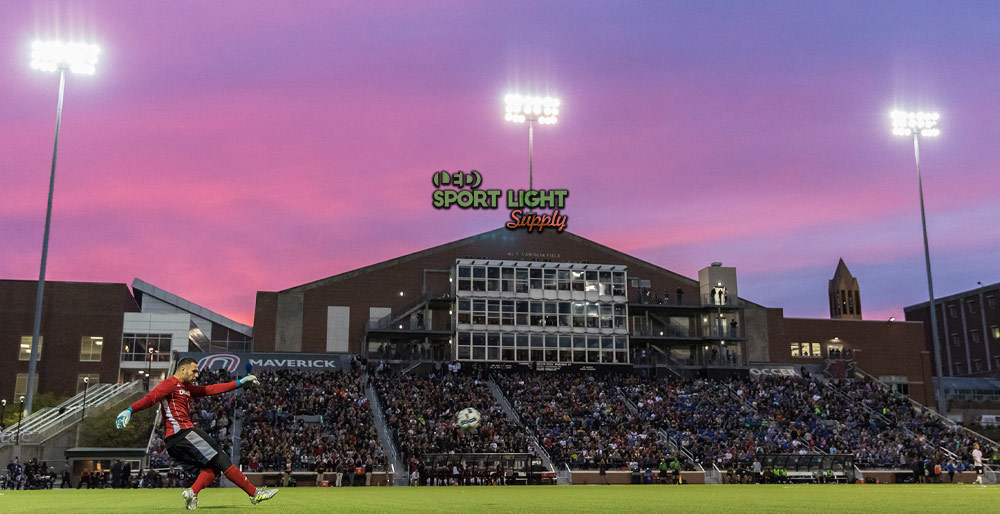
High-mast lighting refers to poles that are at least 30 meters (98 feet) tall, contrasting with conventional lighting poles that are shorter. High-mast systems typically feature a Luminaire Ring, which may hold between four and eight lights, though up to sixteen lights are not uncommon.
The most frequently used lighting types for high-mast systems include High-Pressure Sodium, though other options such as mercury vapor, metal halide, and increasingly LED lights are also employed. Maintenance of high-mast lights is usually performed by lowering the Luminaire Ring to ground level using a small cherry picker unit or similar equipment.
Indoor Sports Facility Lighting
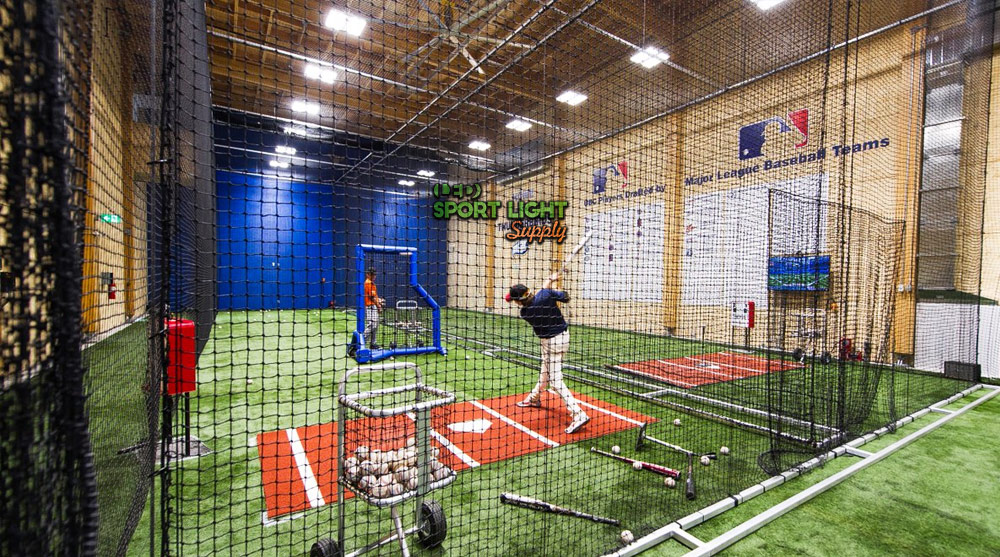
Indoor Batting Cage Lighting
Indoor sports facilities, including batting cages, present unique lighting challenges that differ from those of outdoor venues. Effective lighting in these settings is crucial for ensuring clear visibility for both participants and spectators.
Importance of Uniform Lighting
In indoor sports, particularly those involving small balls such as baseball or softball, maintaining consistent lighting is essential. The lighting must be uniform across the entire playing area to ensure that the ball remains visible at all times. Inadequate or uneven lighting can create shadows or bright spots that may cause the ball to appear to accelerate or change speed as it moves between light and dark zones. This can significantly affect players’ ability to judge the ball’s flight and trajectory, leading to potential difficulties in performance.
Contrast and Visibility
Adequate contrast between the ball and its background is another important consideration. The lighting system should be designed to enhance the visibility of the ball against the playing surface and any surrounding elements. This helps players track the ball more effectively and reduces the likelihood of misjudging its path.
Sports Lighting Glossary and Key Terms
Digital Addressable Lighting Interface (DALI)
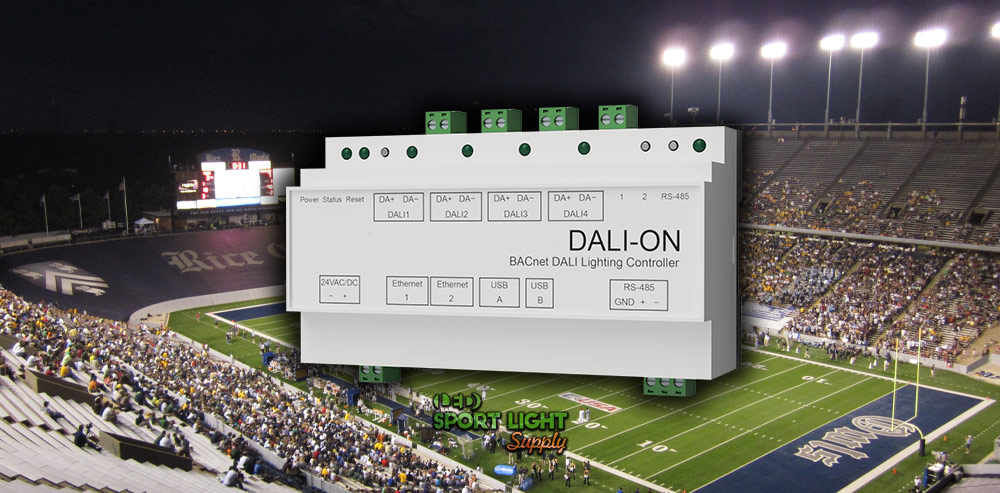
The Digital Addressable Lighting Interface (DALI) is an advanced system used for controlling lighting. With DALI, each light fixture can be individually recognized and controlled, allowing for precise switching and dimming functions. This system also enables the reporting of lighting failures to a centralized location, facilitating easier maintenance and management of the lighting infrastructure.
Daylight Harvesting
Daylight Harvesting refers to an automated system that optimizes lighting based on the availability of natural daylight. In sports halls and indoor venues, this system automatically switches off artificial lights when sufficient daylight is present, thus reducing energy consumption and operational costs.
Motion Sensing / Presence Detection
Motion sensing or presence detection systems are designed to enhance energy efficiency by controlling lighting based on occupancy. These sensors detect whether there are people present in a room and adjust the lighting accordingly, turning lights on or off as needed. This technology helps to lower lighting costs by ensuring that lights are only active when required.
Panel Lights
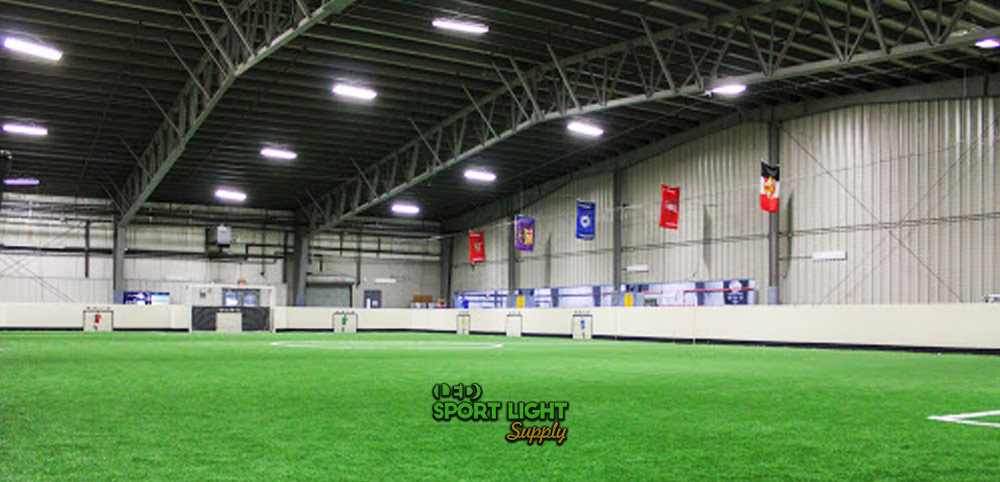
Panel lights are a popular choice for indoor sports venues due to their ability to enhance visibility and improve spectator enjoyment. They offer up to a 70% reduction in lighting costs compared to traditional options. Despite the clear advantages of LED panel lights over metal halide fixtures, only 33% of indoor sports venues have transitioned to this more efficient lighting solution.
Direct vs. Indirect Lighting
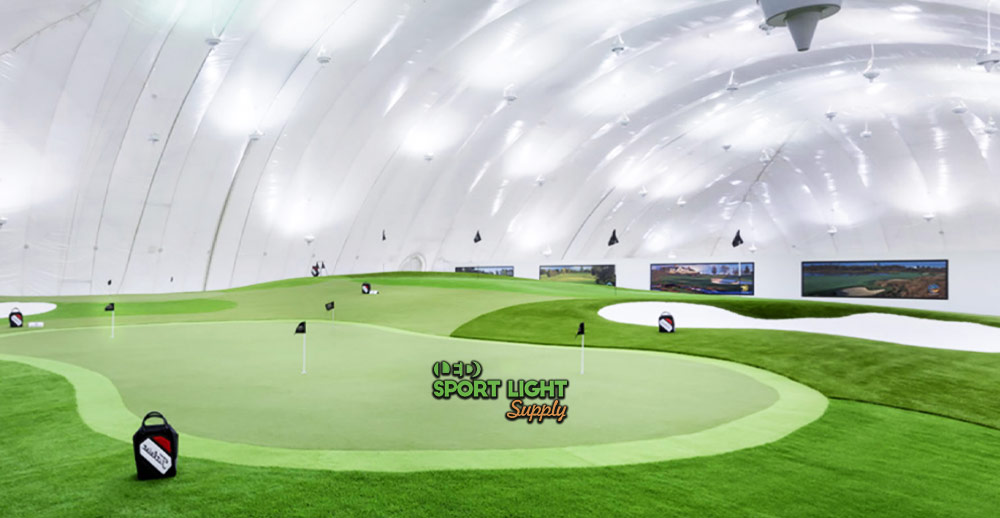
Direct lighting involves positioning light fixtures to focus light directly onto the playing area, minimizing light loss and maximizing efficiency. In contrast, indirect lighting involves bouncing light off the ceiling before it reaches the playing area. While indirect lighting reduces glare and provides a more uniform light distribution, it can reduce the overall efficiency of the lighting system. Modern LED panels offer the flexibility to adjust lighting to specific requirements, allowing for customized solutions that balance efficiency and performance.
Final Thoughts
Lighting design is often an afterthought in the planning of indoor sports facilities, which may feature various configurations with divided areas for different uses. This complexity necessitates a thoughtful approach to lighting design. Modern LED systems offer the advantage of programmable configurations, allowing different lighting setups to be automatically adjusted according to the specific requirements of each room or area. This flexibility ensures that lighting remains effective and efficient across diverse facility layouts.
